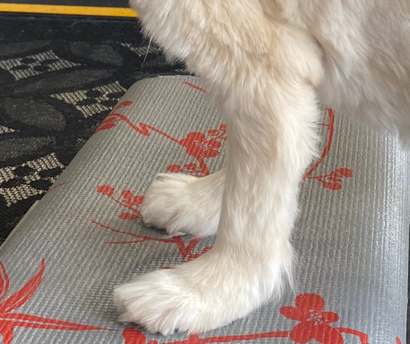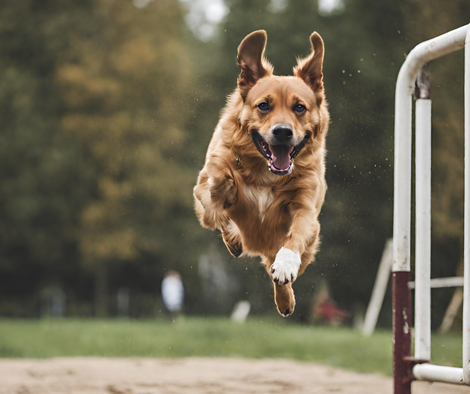|
As a canine physiotherapist, I see many injuries and pathologies in dogs ranging from spinal disease to hip dysplasia to ACL injuries. One injury that tends to alarm doggo owners more so than others is a condition called carpal hyperextension. What is Carpal Hyperextension? Carpal hyperextension, also known as "dropped wrist" or "down pastern," is a condition that affects a dog's front legs. This occurs when the carpus, which is the equivalent of the human wrist in dogs, extends beyond its normal range, causing instability and discomfort. In simple terms, it's like a dog's wrist bending backward more than it should and the supporting ligaments can become lengthened and stretched. A normal wrist has straight upright legs while a hyperextended wrist is flatfooted in appearance. Causes of Carpal Hyperextension
Signs and Symptoms Identifying carpal hyperextension in doggos is the first step towards addressing the issue. Keep an eye out for the following signs:
Treatment Options As a canine physiotherapist, my primary goal is to help doggos regain their mobility and comfort. Treatment depends on the severity of the condition but here are some treatment options for carpal hyperextension:
Preventing Carpal Hyperextension Prevention is always better than cure. To minimise the risk of carpal hyperextension in doggos, consider the following:
Carpal hyperextension can be a challenging condition, but with the right guidance, it's possible to manage and let dogs go on to lead a full and happy life. Remember, early detection and proper treatment can make a world of difference. If you suspect your dog is suffering from carpal hyperextension, don't hesitate to reach out to a canine physiotherapist or veterinarian for assistance. If you want to learn more tricks and tips and be involved in a community of like minded individuals, join our facebook group below: |
AuthorJoanna Whitehead Archives
June 2024
Categories
All
|



 RSS Feed
RSS Feed
